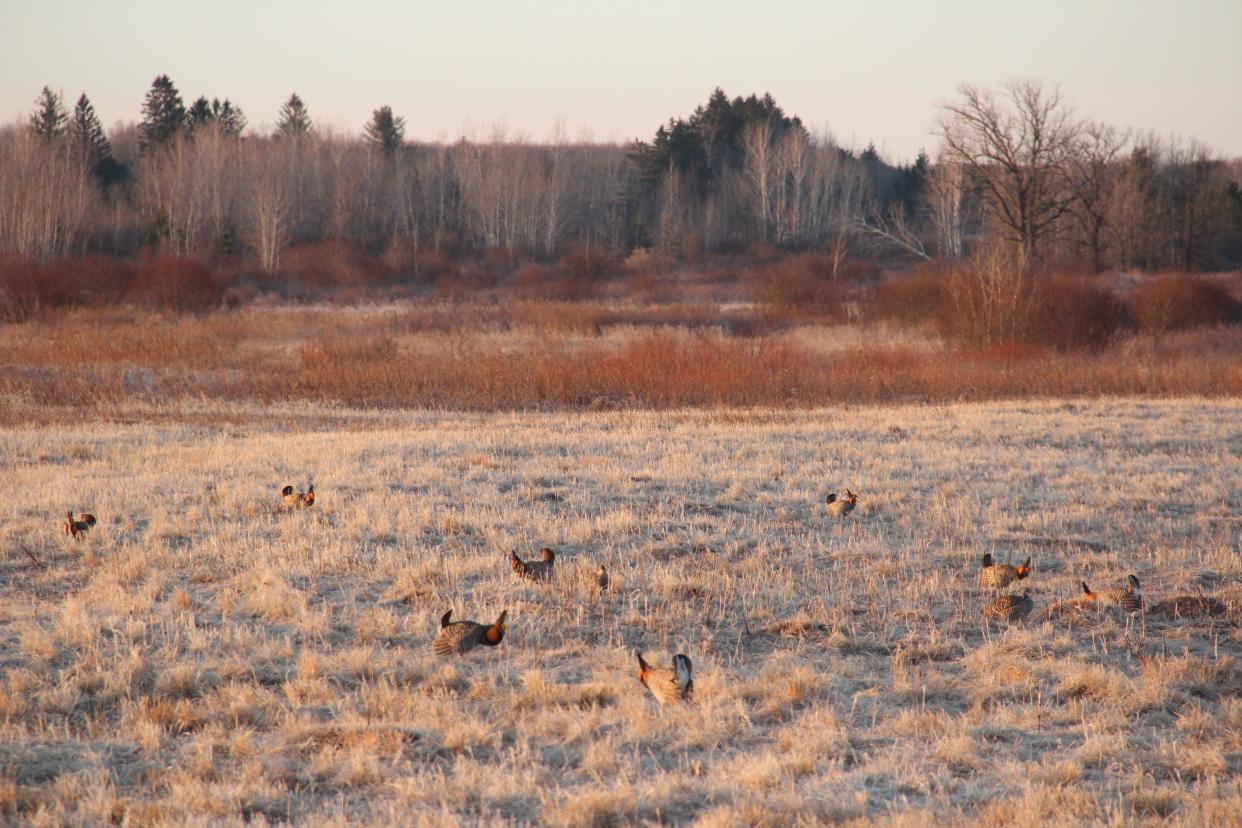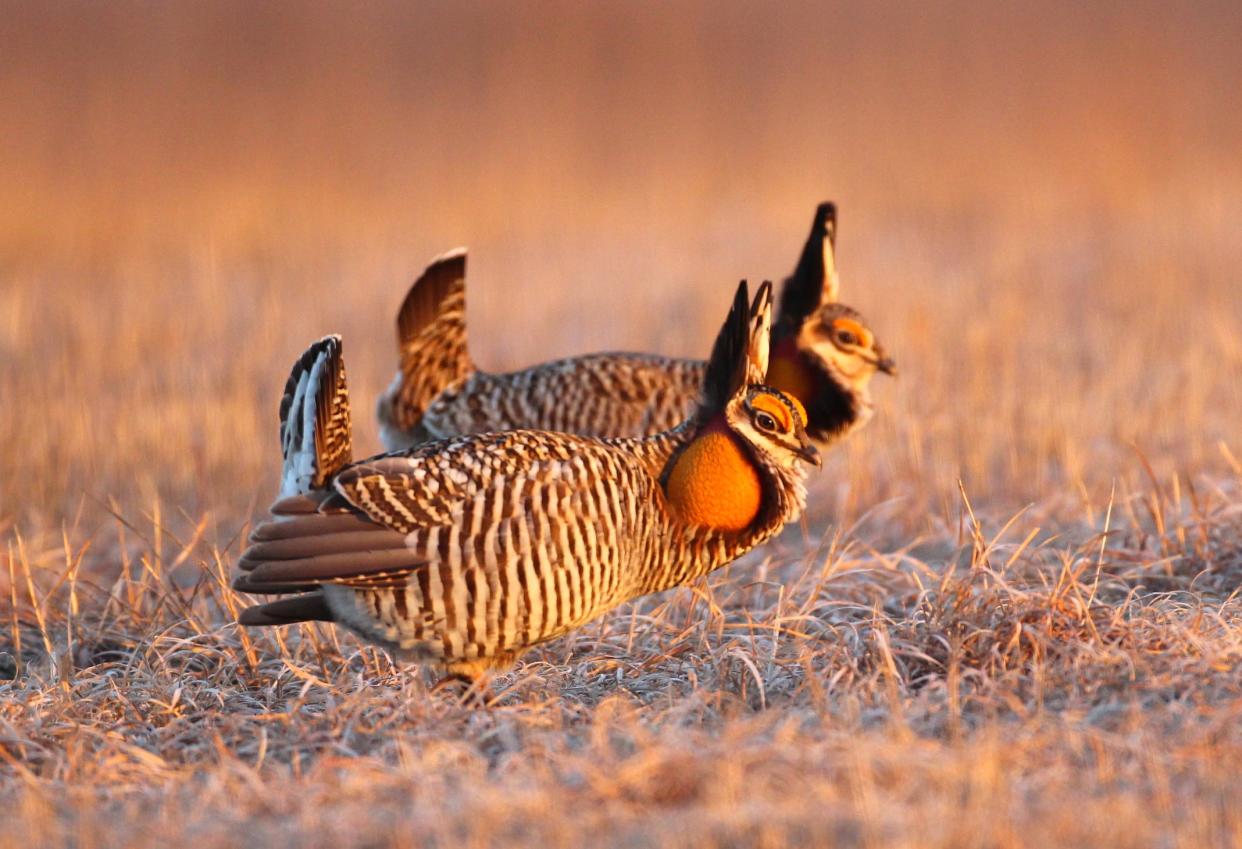A massive proposed Wisconsin solar farm could wreak havoc on threatened prairie chickens
A massive proposed solar energy development in Portage County has caused conservationists to sound the alarm over the project's potential detrimental impacts to Wisconsin's threatened population of greater prairie chickens.
The Vista Sands Solar Farm would span about 8,500 acres in the towns of Buena Vista, Grant and Plover, in many cases abutting the Buena Vista State Wildlife Area, home to the state's largest remaining population of prairie chickens. In some instances it could also place solar panels on known prairie chicken breeding sites.
It comes on the heels of the already-approved Portage Solar project on 1,730 acres in the area.
More: Outdoors calendar
The new proposal has ratcheted up worries for local wildlife, especially prairie chickens.
"We are very concerned that the 8,500-acre project, together with the adjacent approved Portage Solar project, could harm the prairie chicken habitat including the Buena Vista," said Cody Kamrowski, executive director of the Wisconsin Wildlife Federation.
Kamrowski highlighted the federation's concerns in a Wednesday presentation to the Natural Resources Board and Department of Natural Resources.
It's the most recent example of tensions over solar development in the state. Land that once was prairie is attractive for farmers and wildlife as well as solar energy companies.
The Vista Sands project, proposed by Doral Renewables LLC of Philadelphia, would produce 1,300 megawatts and be the state's largest solar farm.

Kamrowksi said while the WWF strongly supports solar energy the proposed Solar Vista project should be closely scrutinized because it would develop parcels directly adjacent and intermingled with the Buena Vista State Wildlife Area.
Prairie chickens are native to Wisconsin but habitat losses over the last 150 years due to increased agriculture and forest encroachment have caused large shifts in the range and abundance of the species. Today the birds exist only in isolated areas in a small portion of central Wisconsin.
In 1979 the prairie chicken was listed as a threatened species in Wisconsin; it is considered a "species of greatest conservation need."
In spring 2023 just 264 male prairie chickens were documented at breeding sites (called leks or booming grounds) in Wisconsin, including 175 at Buena Vista State Wildlife Area.
The birds are found mostly on state-owned land but also occur on private parcels in Portage County.
A map of proposed locations for the Vista Sands development shows some on known prairie chicken breeding sites, also called leks or booming grounds.
"You know well the fragility of the prairie chicken population in the state," Kamrowski said. "Buena Vista is the key property with 60 to 70% of the state’s population but the species has trended downward and is heading towards its survival tipping point."

Kamrowski said since the DNR has acquired 12,000 acres at Buena Vista for prairie chicken habitat the agency should take an active role as a landowner in the PSC's review process. In addition, he requested that an Environmental Impact Statement be conducted for the proposed solar project.
Further, the WWF has applied to be an intervenor in the Vista Sands application to the Public Service Commission.
Concerns over potential impacts of solar farms to the state's prairie chickens are not new. The 2022-32 Wisconsin Prairie Chicken Management Plan states “research leads to concern that future solar farms and their associated infrastructure may have significant negative impacts on GRPC, especially solar farms in close proximity to lek sites."
The DNR prairie chicken committee added a "research priority" to investigate the concerns but has yet to issue findings.
This article originally appeared on Milwaukee Journal Sentinel: Wisconsin prairie chickens threatened by proposed solar farm
